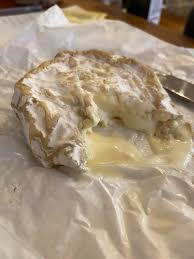What do you do the day after an election when there has been a realignment of the Australian electorate? Suddenly a majority of Australians are voting to address climate change, for integrity and for now, time is being called on the Paul Hogan vision of the normal Australian – the end of The Australian Sheila – a dutiful object of the male frustration, where sexual violence masquerades as consensual behaviour.
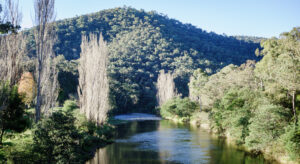
We went to Dargo. Dargo is a bush town, where the legend of the mountain is evident. As with so much of settlement in Victoria, it was the pursuit of gold which drove settlement at the foot of the Great Dividing Range where the Dargo River and Crooked Creek flow into the Mitchell River. Here there was alluvial gold and also deeper lead (lode) mining, which is so much the history of Victoria. However the gold did not last long around Dargo; it petered out to the extent that at one point Dargo verged on being a ghost town.
After you leave Dargo, you wind your way into the forested Great Dividing Range and the road eventually ends near the ski resort of Mount Hotham. It is a tortuous trip, a challenge to those prone to car sickness, through that other great resource of Eastern Victoria – timber. Cutting down old forest, which covers much of the land, has become as unfashionable as would tipping all the tailings from mineral mining down the Dargo River, and yet we are told that VicForests continues to actively log right through this area.
Dargo therefore embodies the myth of the rugged hard-riding horsemen of the bush ballad, but in reality these are the stuff of pub myths. The general laidback attitudes of the people belie the scrabble existence.
The day is beautiful; the air is clear. There is neither wind nor cloud. The deciduous trees are all vivid in a mixture of crimson, scarlet, bronze and yellow along the roads and in the Dargo township as it is basking in the late autumn sunshine. Yet much of the background for the mountain man myths are the hills covered in eucalypts. There are none of the variegated colours of the deciduous exotics on the mountainsides. There are these forests of messmate, with its stringy bark, the lofty mountain and alpine ash with their paler trunks. In the end, what is a deep green mountainside as it drifts away through the gorges and takes on the steely blue-green appearance so characteristic of the eucalypt forests. We wonder how much of these mountains has been traversed by white man; and then one of the group pointed out the electric power lines. The area is riddled with deer, which attracts the hunter. The rivers attract the angler in search of wild trout.
This area has not been burnt for a long time, although to the east there have been devastating bush fires, which razed the settlements of Genoa and Mallacoota two years ago. Today, bush fire season is so far away – and yet Dargo has been threatened and will be again. As we drive through it, the endless expanse of blackened trunks is wreathed with new growth and mingle with white forest skeletons that will never to regenerate.
But today with a bottle of beer I am contemplating a beautiful landscape, where the fire did not come; where there is not a ballot box nor hoarding spruiking some far-off candidate who may never have stepped in the town. This is bliss. We do not see the tears of the vanquished nor the victory speeches nauseating in the myriad of fleeting acknowledgements – only Australian beauty, where only recently in a major coup, back down the valley towards Bairnsdale, a sand mining proposal on the Mitchell River, which would have ripped the guts out of this area has been refused by the local people.
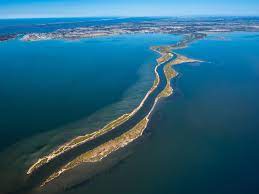
When we come down from Dargo to the Coast, before we return to where we are staying, we are driven down this long spit of land – the Mitchell River Silt Jetties, which divide the Mitchell River from Lake King. This narrow tongue of land, which has been built up over thousands of years, is the longest of its type in the world. The river flows into Lake King at the end of this long tongue of silt and sand.
The river shimmers in the twilight, protected from the lake where its waters are now ruffled by the wind coming in from the south-west. Yet despite the buffeting, black swans glide past. What a day to spend; what sights to be seen – and yet another place on the bucket list to be crossed off – or more properly committed to my bank of memories – of places seen, places experienced; a pity I can no longer tramp around as I used to do.
But a memorable election day. Australia has been voted in.
What can I say about the Member for Longman!
They say bad generals always fight the last war, and the Liberal campaign fell into the same trap. Morrison won a surprise victory in 2019 through a negative campaign in which he depicted then-Labor leader Bill Shorten as a dangerous radical. Labor, wary of giving Morrison a second victory, changed its strategy. It matched many of Morrison’s policies and was cautious in its own offerings. Labor was like an echidna, the spiky Australian animal that rolls into a ball when attacked. Morrison kept attacking, as if he knew no other mode, even though Labor’s small-target strategy gave him so few opportunities.
Our own Richard Glover in The Washington Post ascribed ten reasons why Morrison lost government. You cannot disagree with his list, but the reason printed above is the one which went to the heart of Morrison’s failure.
Morrison was the classic flim-flam man who perfected his techniques through his association with Pentecostalism. It enabled him to surf his waves of personal impotence right to the end. His problem was that the spotlight became so intense that the greasepaint melted and he was exposed as an aggressive peddler of untruths. Morrison’s entrails will be barbecued on the fires of Hybris ignited by the fire-starter of “hubris”.
When Whitlam ended 23 years of Coalition rule, the Liberal Party voted for a new leader on the resignation of McMahon, himself a very divisive unpleasant character. The choice made was for Bill Snedden, who had been McMahon’s Treasurer; considered to be a nice guy, but lightweight. He beat Nigel Bowen on the fifth ballot by one vote.
Bowen, who was a distinguished jurist, had replaced Garfield Barwick as the member for Parramatta in 1964, (which indicates that the seat does not have to be held by a local). The current high-flying wealthy young banker, Andrew Charlton, lived in Bellevue Hill at the time of his parachute pre-selection; he not only won, but achieved a one per cent swing towards him. This is by way of a parenthetic comment about what has been occurring for some time, namely that any electorate increasingly cannot be taken for granted – a theme in Australian politics which will cause traditional shifts in alignments. Now back to the main narrative.
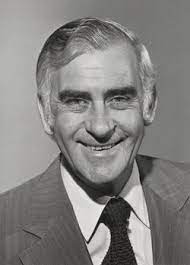
Malcolm Fraser did badly in this ballot, because he was seen as disruptive and had at that stage an enemy/friend ratio well in the positive. So Snedden, who had grown up in Perth but represented the outer Melbourne suburban seat of Bruce, became Opposition leader and Philip Lynch, the member for Flinders, his deputy. He inherited a divided party and over the course of his two-year stewardship, he was able to reconcile the differences to such an extent that Fraser, pictured as the tough guy, became viable. Nevertheless, bringing the Opposition together as Snedden had done, paradoxically projected him as not being tough enough, namely, in the long term, unfit – and of course the lightweight tag became featherweight if not flyweight among the Fraser acolytes. A member of these acolytes was the newly-minted John Howard.
Thus, the tough guy persona, despite the rants from the “Murdochrinaires”, is not the way to heal a party divided. These people are screaming for the anointment of Peter Dutton. Dutton is an ex-Queensland copper made good. The Queensland police force has been shown on many occasions to be wanting, and to stigmatise Peter Dutton is as much to stigmatise me for being a product of a school that had produced its fair share of “shonks”.
The second reservation is that Queensland has never produced a Liberal Party Prime Minister. Arthur Fadden was the nearest, a Country party stalwart, who was Prime Minister in his own right for 40 days in 1941. However ne’er a Liberal; only fleetingly the Country Party member for Darling Downs, who later was to be Menzies’ Deputy Prime Minister.
One of the results of a major loss is that the Senate representation remains and contains many of the most dysfunctional members of the Party. They remind one of the Calwell stewardship of the Labor Party – as totally unelectable on the left as these jokers are on the right. If one is familiar with the writings of Georges Sorel, one can recognise the similarity in the authoritarian attitudes and behaviour of these people, who live on the extremes. If you viewed the post-election rant of Rowan Dean, it gives a terrifying view of the world of the extreme authoritarian hatred. These people are backing Dutton.
The West Australian Premier dismisses Dutton as a dullard, and his form of strident form of dogmatism and fear mongering will not run well in the southern states, if reliance can be placed on the current voting patterns

Anybody who said, as he did in 2015: (sic) Noting that today’s meeting on Syrian refugees was running a bit late, Mr Dutton remarked that it was running to “Cape York time”, to which Mr Abbott replied, “we had a bit of that up in Port Moresby”.
Mr Dutton then added, “time doesn’t mean anything when you’re about to have water lapping at your door”.
That exchange alone should disqualify him from the leadership at this time; it was outrageous then, but now, has he demonstrated any change for the better?
The Liberal Party needs to purge itself, not play to a diminishing gallery of misfits. I well remember one of my contemporaries describing the Young Liberals as “five per cent of lawyers leading ninety-five per cent misfits.” This assessment may remain partially true now. These days the misfits are just absorbed in a politician’s office to develop their consigliere profiles. Thankfully, at last the true results of such a generation of these types are being brutally exposed.
The Liberal party needs a healer and one who can reach across Australia, including regional Australia – and that includes humouring the Queenslanders. Snedden had the guts to do so almost 50 years ago. I severely doubt that Dutton has that ability to do that – reach across Australia.
Tell me what is a pharmacist?

In 1961 I sat down to undertake the last Materia Medica examination for medical students. It was then part of the medical course that we learnt to make pills, lotions and ointment – and the last memory of this immersion in the world of the apothecary was a brush with male extract of fern. That herbalism epitomises “the alchemist” struggling to be accepted. It exemplified the quaintness of the village chemist, with carboys in the windows and the apprenticeship system of pestle and mortar. Our teacher, an old gentleman with a medical degree and a nineteenth century demeanour, passed into folklore that year with the change of the medical course to substitute pharmacology, and the advance of science into the education of the apothecary.
I remember The University of Melbourne rejecting the idea of having a faculty of pharmacy, even though the Pharmacy College was just up the road. Instead, Monash University took on the education of pharmacists. I think The University of Melbourne hierarchy at the time thought that Pharmacy should use the tradesman’s entrance. In fact, the Monash Faculty of Pharmacy and Pharmaceutical Sciences is now labelled number one in world
In a recent statement, the Dean, Professor Arthur Christopoulos, said: “The pandemic has certainly reinforced the crucial and frontline role that pharmacists and pharmaceutical scientists play in society. Over and above their normal services, we’ve seen the whole sector step up and play a huge role in vaccine rollout.”
The Faculty, known for its high profile research through Monash Institute of Pharmaceutical Sciences (MIPS), is responsible for the development of Australia’s first mRNA vaccine candidate for COVID-19 and in 2021 launched the Neuromedicines Discovery Centre. The NDC is an end-to-end academic enterprise for the discovery, development, evaluation, manufacture, and clinical rollout of 21st-century medicines to treat mental health disorders, as well as the Medicines Manufacturing Innovation Centre, which supports Victorian biotech and pharma companies to develop a competitive edge and retain jobs within the state.
The Australian Pharmacy Research Centre was one of the first steps in trying to develop a research program in community pharmacy, and illustrated the dichotomy of the academic pursuit between laboratory and community pharmacy, of which the hospital pharmacist is a subset of the latter.
The problem with community pharmacy, because it is dependent on reimbursement of drugs under the Pharmaceutical Benefits Scheme, has meant the merchant pharmacist, through the Pharmacy Guild, has become a powerful lobby, with the merchant aspect well to the front. Pharmacists have been very strong on restrictive trade practices, and because they have been seen by a succession of Coalition governments as political “blue” outposts, they have done very well out of government largesse. Even the big retailers have been unable to establish pharmacies within their walls, despite having a prominent Liberal Party politician to lobby for them.
The residual problem is that these large chain pharmacies have arisen presumably through a loophole of benefit to the entrepreneurial pharmacist. This is a licence to promote quackery, and not unsurprisingly the Government has done nothing despite having the regulatory power. But then the Pharmacy Guild has been a major donor.

Personally, I have a very good local pharmacist, and her pharmacy is not a sterile dispensary but a place where the pharmacist is a source of good advice. Nevertheless, it sticks in the craw to be confronted by television images, usually of young healthy people with children, with shopping baskets overflowing with bottles of vitamins and potions; the implicit message is that it is good, even compulsory, to take all this crap in order “to keep well”.
Further, when these co-called pharmacies move into the cosmetic industry it challenges the definition of what is a pharmacy? What are the professional priorities?
It is one area which must be a priority in any review – whether a health review or as a matter for an Integrity Commission – and I have yet to address the role of the pharmaceutical industry in listing drugs for government subsidy without the need to say “bingo”.
COVID Bare Foot
Guest sufferer: Janine Sargeant
COVID has been blamed for many things, including COVID toe, but COVID ankle? While the “dress shirt above the waist Zoom dressing” and styling your Zoom background may have been entertaining for a while, the accompanying tracksuit pants and bare feet or slippers have resulted in a raft of unexpected injuries. As many of us have spent time working from home in lockdown or avoiding the busy office environment, it has also meant not wearing supportive footwear. For the barefooted and be-slippered, this has delivered up a nasty surprise (particularly for those who normally do wear orthotics).

Essentially, extended periods in bare feet or slippers plus a lack of regular “normal” exercise have left many with posterior tibial tendonitis (inflamed or stretched tendon that supports the arch of the foot) which can lead to arch collapse and permanent foot problems.
Similarly, the Achilles tendons of the working-from-home brigade have also taken a beating, again with what one expert described as “neglectful footwear”, a few extra COVID kilos, a lack of exercise, the change to treadmill running, prolonged closure of gyms and loss of exercise programs – in other words, the complete change in physical routine brought about by COVID lockdowns.
As one podiatrist commented: he couldn’t believe the number of people who have come to see him with Achilles problems or posterior tibial tendonitis. Such people now need orthotics to help them restore function to their feet; no doubt the physios are seeing the same unintended consequence of working at home. For this author’s painful ankle, the road to resolution is paved with new orthotics and months of exercises designed to strengthen the offending tendon – and a long break from “neglectful footwear”.
Requiem for a Light Welterweight
Really Schadenfreude is not a nice word. I am sure that one Andrew Peacock (or perhaps the ghost of the colt galloping the streets of Hawthorn) would have appreciated finally the final exit of John Howard, a person who started the fashion of a Liberal Prime Minister losing or abruptly vacating their seat.
From the time Howard entered politics in 1974, behind that mild-mannered courteous exterior has dwelt a wellspring of relentless hatred. Do not get me wrong; in his early years as Prime Minister, he made a reasonable fist of it, and he had members of his staff who provided a counterbalance to his instincts which helped preserve his public persona – no more so than Arthur Sinodinos, the long-term moderate who ran his office. For a short period in the early noughties, I was privy to the workings of him as the Prime Minister.
He achieved the shift of the Liberal Party power base to New South Wales, and left the Hamer Liberals in his wake, while detesting Kennett in this latter’s brief flame of power. I remember being at the Adelaide Airport on one occasion when Howard and I were retrieving our luggage. It was the time that Howard was out in the long grass in the early 90s. The initial exchange was inconsequential, when something I said triggered a vituperative response that he would get “them”. Apart from not being one of “them”, before I could ask him who the “them” was, he had rushed off. He disliked Costello, and there was something visceral about his approach to Victoria. I have always wondered whether the “them” were the Victorian Liberals. Paul Keating also was surely one of “them”; Howard was always expansive in his hatreds. Whether or not it can be attributed to him, Victoria had become more and more toxic for the Liberal Party.

But all this is a long time ago, and rather than just advise from the background, Howard still allowed himself to be pushed around in this election campaign. Why? It seems that even 15 years later he still cannot perceive the tsunami coming.
In a way, as a contemporary old buffer, I feel sorry for him. However, the imagery of an old age person with antiquated views campaigning provided a view of the Liberal Party where men wore morning suits and badges, and women made pumpkin scones. The image was painful and did not win any votes.
Bit of gratuitous advice John, write a blog about improving the treatment of the aged and then imagine anybody is reading it. It helps endure life in the gloaming – it is certainly better than just being plonked in front of TV set or wheeled around in a metaphorical Zimmer frame watching your legacy trampled.
Mouse Whisper
If I hear the new Prime Minister mention his rags to riches commentary once again, I doubt if I will be able to hold down my Emmenthaler.
However, I loved the comment which said that the Prime Minister must be happy to be back in public housing again after so many years. Maybe though he could flog off Kirribilli and take over Admiralty House. Then build public housing on site, except even a mouse could imagine the potential homo sapiens rorts with such a project.
In any event, Governors-General don’t need summer palaces at the cost to the taxpayer. The hunting lodge at Yarralumla should more than do.
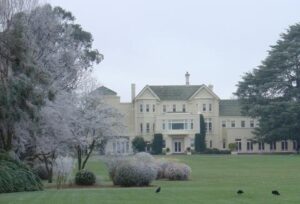

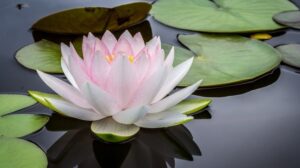 Whoever wins will be faced with having to govern, unlike what has happened over the past decade. This was the time of the lotus land; when the rich became richer and the dispossessed were harassed by false gods and more and more were caught in the culture of poverty.
Whoever wins will be faced with having to govern, unlike what has happened over the past decade. This was the time of the lotus land; when the rich became richer and the dispossessed were harassed by false gods and more and more were caught in the culture of poverty.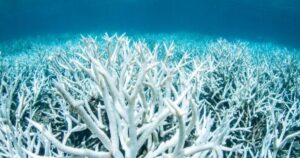
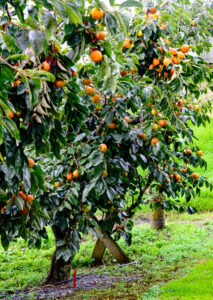 Last week, we were driving into the Northland town of Kerikeri, when we saw an orchard named Persimmon Patch. I had never been into a persimmon orchard, even though I had worked around the fruit growing areas of Victoria, where I would have expected to find them growing, if not in a dedicated orchard. I had once seen a persimmon tree growing in a suburban garden in Melbourne bearing fruit. Not much comparison.
Last week, we were driving into the Northland town of Kerikeri, when we saw an orchard named Persimmon Patch. I had never been into a persimmon orchard, even though I had worked around the fruit growing areas of Victoria, where I would have expected to find them growing, if not in a dedicated orchard. I had once seen a persimmon tree growing in a suburban garden in Melbourne bearing fruit. Not much comparison.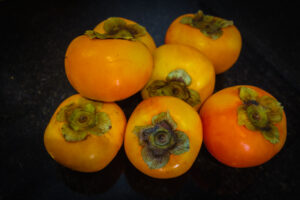
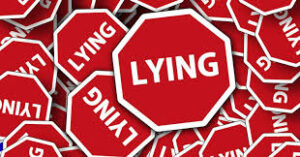 No one should be surprised that the “big lie” has become gospel in White evangelical churches. The New York Times reports: “In the 17 months since the presidential election, pastors at these churches have preached about fraudulent votes and vague claims of election meddling. … For these church leaders, Mr. Trump’s narrative of the 2020 election has become a prominent strain in an apocalyptic vision of the left running amok.”
No one should be surprised that the “big lie” has become gospel in White evangelical churches. The New York Times reports: “In the 17 months since the presidential election, pastors at these churches have preached about fraudulent votes and vague claims of election meddling. … For these church leaders, Mr. Trump’s narrative of the 2020 election has become a prominent strain in an apocalyptic vision of the left running amok.”
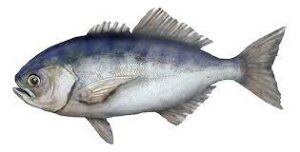

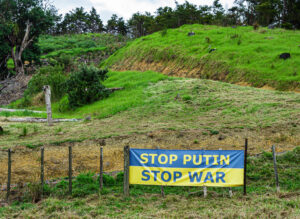 Overlooking wild surf beaches, through rolling forested areas, past marae on the road between Russell and Whangerei was the sign in Ukrainian colours “Stop Putin – Stop War”.
Overlooking wild surf beaches, through rolling forested areas, past marae on the road between Russell and Whangerei was the sign in Ukrainian colours “Stop Putin – Stop War”.

 Dr Allen as reflected in her pronouncements is deeply embedded in the Liberal Party, and once stood for the seat of Prahran. Her electorate at one end represents the environment in which she has lived for her 40 years. Her electorate encompasses the dilemma of once being safe, now redistributed to include areas which traditionally are more Labor in orientation.
Dr Allen as reflected in her pronouncements is deeply embedded in the Liberal Party, and once stood for the seat of Prahran. Her electorate at one end represents the environment in which she has lived for her 40 years. Her electorate encompasses the dilemma of once being safe, now redistributed to include areas which traditionally are more Labor in orientation.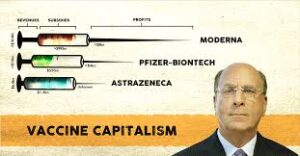
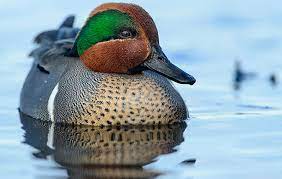 The colour “teal” comes from the green flash on the side of the teal duck’s head (teal comes the old Dutch word for this bird). Well, the colour is not actually green but a shade of blue admixed. To me the colour of the bird’s head is more a metallic green sometimes seen as the colour of souped up Holdens. However, those who have appropriated the colour for political purposes as was attempted in New Zealand in an aborted attempt to form an alliance between the Greens and the conservative blue Nationals left the colour as its legacy.
The colour “teal” comes from the green flash on the side of the teal duck’s head (teal comes the old Dutch word for this bird). Well, the colour is not actually green but a shade of blue admixed. To me the colour of the bird’s head is more a metallic green sometimes seen as the colour of souped up Holdens. However, those who have appropriated the colour for political purposes as was attempted in New Zealand in an aborted attempt to form an alliance between the Greens and the conservative blue Nationals left the colour as its legacy.
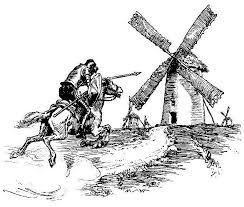
 The 1993 election is always mentioned in the context of the birthday cake episode in which Mike Willesee in interviewing John Hewson asked him the effect of GST on the price of a birthday cake. Hewson gave a qualified reply, as any honest politician should give, but his answer was transposed into a triumphant fourth estate “gotcha”.
The 1993 election is always mentioned in the context of the birthday cake episode in which Mike Willesee in interviewing John Hewson asked him the effect of GST on the price of a birthday cake. Hewson gave a qualified reply, as any honest politician should give, but his answer was transposed into a triumphant fourth estate “gotcha”.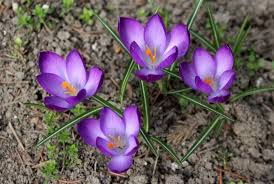
 I am a pilgrim with a P/C, a bag of hessian straggling along the cyber pathway, lined by an array of “punitive cybresses”.
I am a pilgrim with a P/C, a bag of hessian straggling along the cyber pathway, lined by an array of “punitive cybresses”.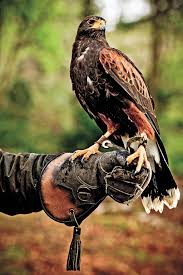
 For almost two years, the right wing has framed the mask issue as one of personal liberty. And many of the rest of us think of masking in terms of personal risk: If we’re not at risk, we’re thrilled to dispense with the discomfort and inconvenience of an N95.
For almost two years, the right wing has framed the mask issue as one of personal liberty. And many of the rest of us think of masking in terms of personal risk: If we’re not at risk, we’re thrilled to dispense with the discomfort and inconvenience of an N95. 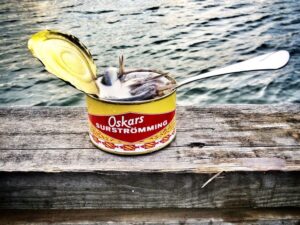
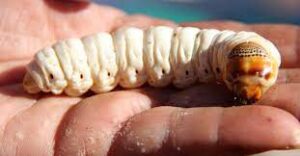 Wonderful in these latter years, there are always questions about dietary idiosyncrasies wherever you are invited out. When one was young, you ate what you were given – swedes, watery marrow and overcooked pork forever irrigated through my memory.
Wonderful in these latter years, there are always questions about dietary idiosyncrasies wherever you are invited out. When one was young, you ate what you were given – swedes, watery marrow and overcooked pork forever irrigated through my memory.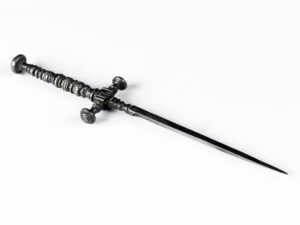 What Australia needs at this point in time is a Savonarola who thinks like Macchiavelli. A national cleanser who has a fine feel for the dorsal stiletto.
What Australia needs at this point in time is a Savonarola who thinks like Macchiavelli. A national cleanser who has a fine feel for the dorsal stiletto.
